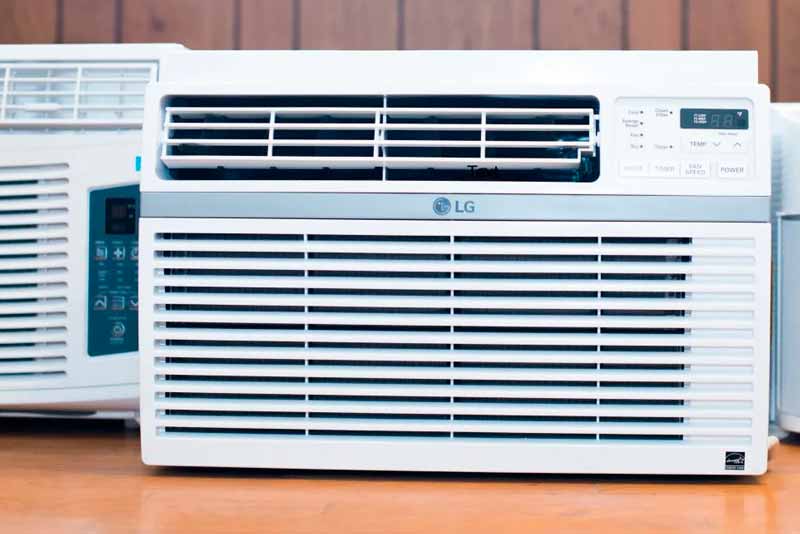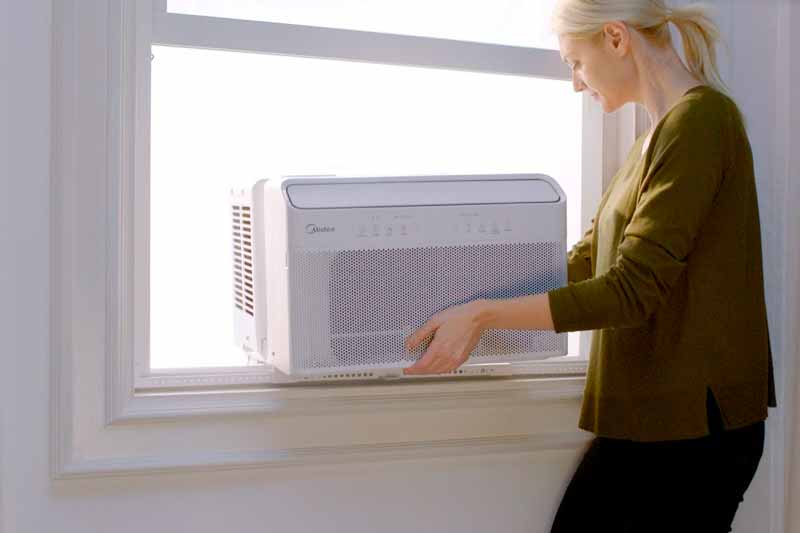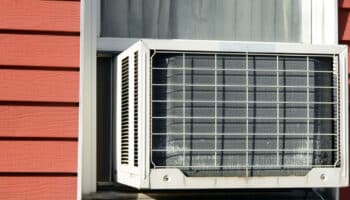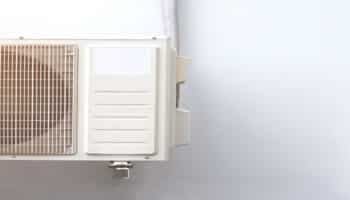How’s the temperature where you live? If it’s already hot or about to get hot, you may be in the market for a window air conditioner.
If so, you’ve come to the right place!
In this guide I’ll walk you through all the considerations you should give thought to before you make your purchase, how to make the right choice for your needs and more.
While you might be tempted to just run out and buy whatever’s the cheapest, that’s rarely a good idea. Because while the cheapest may seem like a good deal upfront, they’re rarely a good deal in the long run.
Air conditioners are inherently expensive to run, so when you also factor in rising energy costs, you want to choose something that will be best for you long term. Lucky for you, I’ve been in the appliance business — big and small — for a long time, and I’m willing and happy to share my expertise with you. For free.
So let’s get started!
Types of Window Air Conditioners
Just as there are different types of windows, there are different types of window air conditioners. When installing a window AC unit in a sash window — sliding or hung — your options are standard, saddle, and U-shaped air conditioners.
Standard Window Air Conditioner

This is your typical rectangular-shaped air conditioner, and it mounts on the window sill. Depending on the manufacturer and model, they’ll often be about 15 x 26 x 20 inches/ 38 x 66 x 51 centimeters in size. However, since all windows are not the same size, there is some variation on this.
Saddle Window Air Conditioners
This type of window unit fits over at the sill and hangs below the window. From the inside, it looks a bit like a saddlebag. Saddle window air conditioners aren’t very common — in fact, there is only one manufacturer of this type of window air conditioner.
U-Shaped Window Air Conditioners

With a standard window unit, there’s often a considerable amount of space that needs to be sealed on the sides.
The advantage of a U shape AC is that this sash comes down and slots into the U shape. This means less sealing and more security. However, again, this style isn’t very popular and is limited to a single brand.
Window Air Conditioner Considerations
Before jumping in your car and heading out to Home Depot or Lowe’s — or letting your fingers do the walking online — there are a few things you need to think about. Let’s discuss them in a logical order.
The Type and Size of Your Windows
Since windows come in all in all shapes, sizes, and styles, it’s important for you to measure your available dimensions before making a purchase.
Windows could be single or double-hung, sliders, or casements. And while it is possible to put a horizontal unit in a slider or casement, you can only do that if it fits in horizontally.
You cannot put a horizontal unit on its side, so you’ll need a vertical unit for smaller spaces. Just be aware up front that the selection of vertical units is much smaller than horizontal, so finding one that suits your needs and has the features you want/need may be a bit more challenging.
As indicated above, your standard window units are all roughly the same size. However, depending on the square footage of your space and the corresponding BTUs of the air conditioner, it might be a little bit bigger or smaller.
Open your window to the max and make note of your available space.
The Size of Your Space
Unless you live in a tiny bachelor apartment, window units are better for individual rooms or spaces. They are not meant to cool your whole home.
Do you want to cool your bedroom? Your home office? Whatever it is, calculate the square footage.
Length x width = square feet/meters.
Environmental Considerations
Before you can determine the cooling capacity — how many BTUs you need — of an air conditioner, you also need to take into consideration environmental factors that impact the heat of the room.
For example, what direction do your windows face and how many hours of direct sunlight do they get in a day? This directly impacts how hard your air conditioner needs to work. If your windows face the south, an air conditioner with a higher number of BTUs may be needed when compared to windows that face the east.
Ceiling height is big factorto consider. The higher your ceilings, the greater the volume of air in the room. At the same time, that doesn’t mean you have to cool the whole room. Since hot air rises, you can get a good balance of cool air down below, and leaving the hot air to rise up towards the ceiling.
Energy Star also recommends you keep the following in mind.
- For rooms that are heavily shaded — for example, you have a big tree outside the window — you can reduce capacity by about 10%
- If a room is very sunny — for example, your windows face the south and get sun most of the day — increase capacity by about 10%
- If you’re looking to cool a room that typically has multiple people — for example, the family room — increase the number of BTUs by 600 for each person
- Units in a kitchen should have an additional 4000 BTUs
Cooling Capacity
With those calculations and considerations in mind, it’s time to determine cooling capacity.
Let’s start off with a general rule. Air conditioners typically need about 20 BTUs for each square foot. So if you have a room that’s 150 sq ft, you would need an air conditioner that’s around 3000 BTUs.
Most window air conditioners range in size from about 5,000 to 12,500 BTUs, so they may not be ideal for very small rooms or very large areas.
To spare you the torture of having to do some math, you can refer to the following size table. However, remember this is just a guideline and you also need to keep in mind the environmental considerations mentioned above.
| Room Size | Cooling Capacity in BTUs |
|---|---|
| 5,000 BTU | 100 to 150 sq ft |
| 6,000 BTU | 150 to 250 sq ft |
| 7,000 BTU | 250 to 300 sq ft |
| 8,000 BTU | 300 to 350 sq ft |
| 9,000 BTU | 350 to 400 sq ft |
| 10,000 BTU | 400 to 450 sq ft |
| 11,000 BTU | 450 to 550 sq ft |
| 12,000 BTU | 550 to 650 sq ft |
Features
Now you know what size air conditioner you need, take some time to think about what features you would like to have or need to have.
Will a window air conditioner with a simple low, medium, and high setting be sufficient, or would you like some of the following features and options?
- Adjustable fan speed
- Air direction control
- Energy Star rating
- Humidity control
- Low decibel rating
- Programmable timer
- Remote control
- Thermostat
- Two-stage motors
Most of those need no explanation but let’s flesh out a few of them.
Low decibel rating. Depending on where you are placing a window air conditioner, you might want to consider how noisy it is.
If you’re putting it in your bedroom and you like lots of white noise, then you might not care. If you’re putting one in the family room where you watch TV, you probably don’t want your air conditioner volume competing with the volume of your television.
Two-stage motors. Choosing a two-stage over a single-stage motor often means greater energy efficiency and better comfort.
Typically, an air conditioner rarely needs to run at high capacity. So on those milder days when a two-stage unit runs at low capacity, it operates for longer periods and produces more even temperatures.
Electrical Requirements for Window Air Conditioners
Air conditioners of any type require a lot of energy. A room or window air conditioner can require anywhere from 110-volt to 220-volt circuits. For example, an air conditioner with a maximum of 12,000 BTUs will run on a standard residential outlet. However, if you are installing an air conditioner with more than 12,000 BTUs you’ll likely need a 220-volt circuit — meaning there’s a good chance you cannot plug it into a standard wall outlet.
Always refer to the specifications of the unit you’re considering. All electrical requirements will be listed.
Condensation
All air conditioners produce some level of condensation.
When installing a window air conditioner, keep in mind that some of that condensation will fall below the unit, while some of it will simply evaporate.
Depending on the installation requirements of a specific unit, most manufacturers require a slight downward tilt, so condensation falls instead of collecting. You do not want water draining into your window frame.
Storage
You have a spot for your air conditioner during the summer months — in your window — but what about over the winter?
If left in the window, your unit could freeze up during the winter. Additionally, since you no longer have the tight seal that your closed windows would provide, you’re letting cold air into your home. This in turn means you’re paying more to heat your home during the winter.
Make sure you have somewhere to store your unit, horizontally if it’s a horizontal model and vertically if it’s a vertical model, over the winter months.
Choosing the Right Window Air Conditioner
Now that you know everything you need to consider before buying a window air conditioning unit, it’s time to make a list of your priorities.
This list will differ for everyone, so no, we’re not providing your list for you. But here’s some food for thought.
Electrical requirements. Clearly, this is one of your most important considerations. If you don’t have an outlet that will handle a larger capacity unit, you can’t run a larger capacity unit. And if you’re in a rental, there’s how much you can do about this.
Before making a purchase, be sure you have the electrical capacity to run your air conditioner.
Energy Star ratings. With the economy in the mess that it is and skyrocketing interest rates and inflation, most people are paying a little bit more attention to their monthly expenses. And next to mortgages and rent, energy costs typically aren’t far behind.
Think of choosing an air conditioner with an Energy Star rating that will guarantee you better efficiency.
Decibel ratings. What’s more important to you? Some peace and quiet or cooler air? Fortunately, you can have the best of both worlds, it just might cost you a bit more.
If you’re planning on installing your air conditioner in a spot where volume is important, opt for an air conditioner with the lowest possible decibel rating.
Window Air Conditioner FAQs
Here are some common questions that those on the hunt for a new window air conditioner often ask.
What are the disadvantages of a window air conditioner?
To name a few, they block some of your natural light, lower your security, and are generally noisy.
Is running a window air conditioner cheaper than running central air?
It depends. A single central air system cooling an entire home will cost less than multiple window units attempting to cool the same area. But if you only have a few small rooms you want to keep cool, a few small window air conditioners may cost less to run.
Does a window air conditioner have to be installed in a window?
They are designed this way and need to release warm air and condensation to the outside as part of the cooling process.That being said, you could construct a hole in the wall for a window unit. But your wall might not like that very much.







